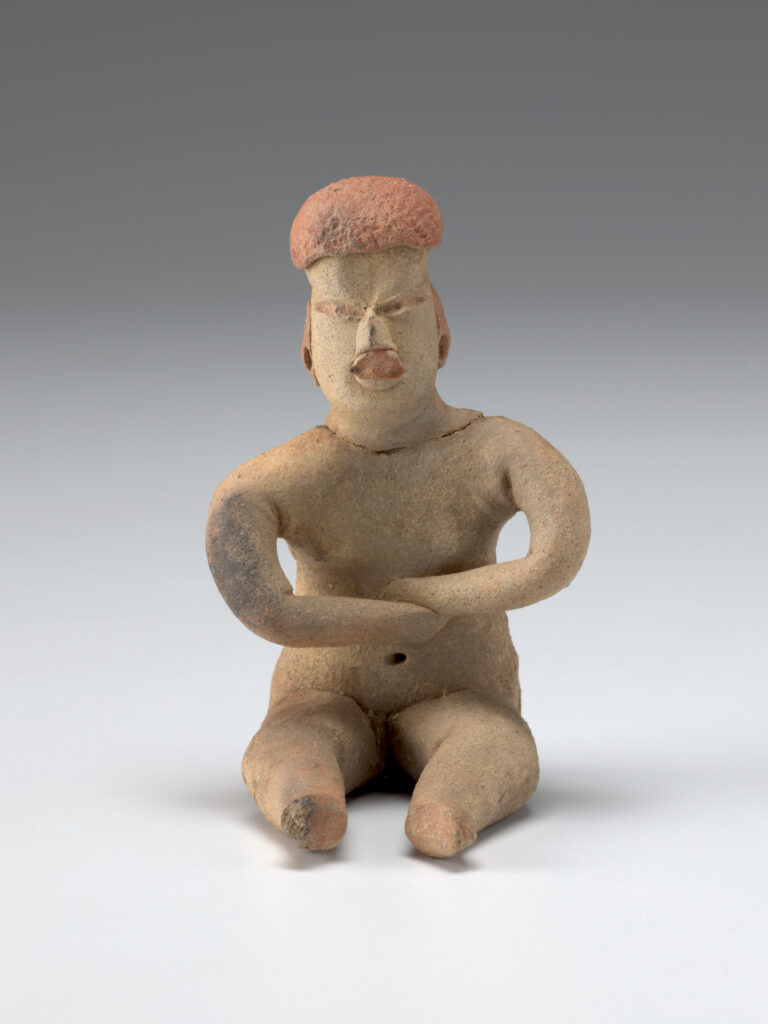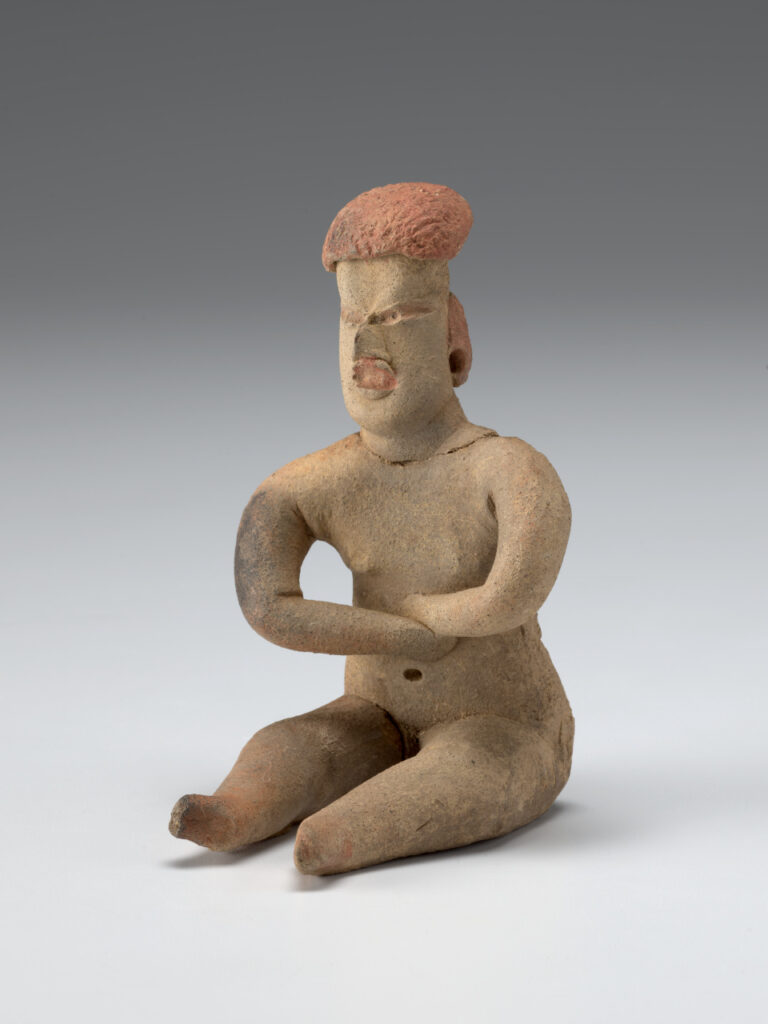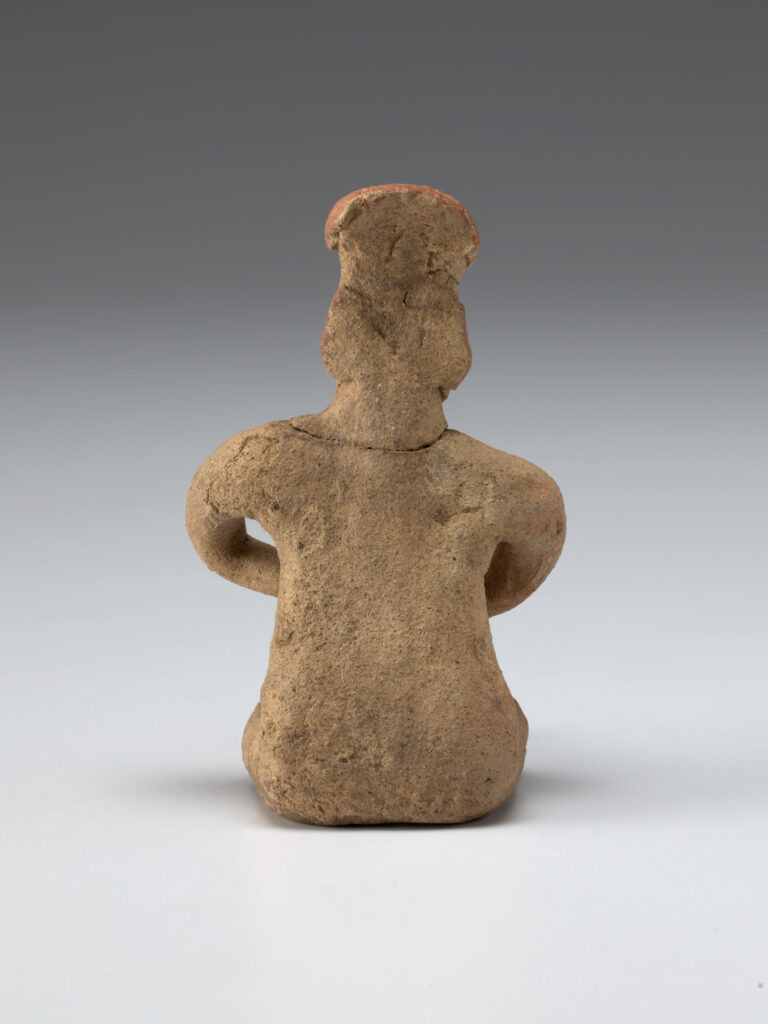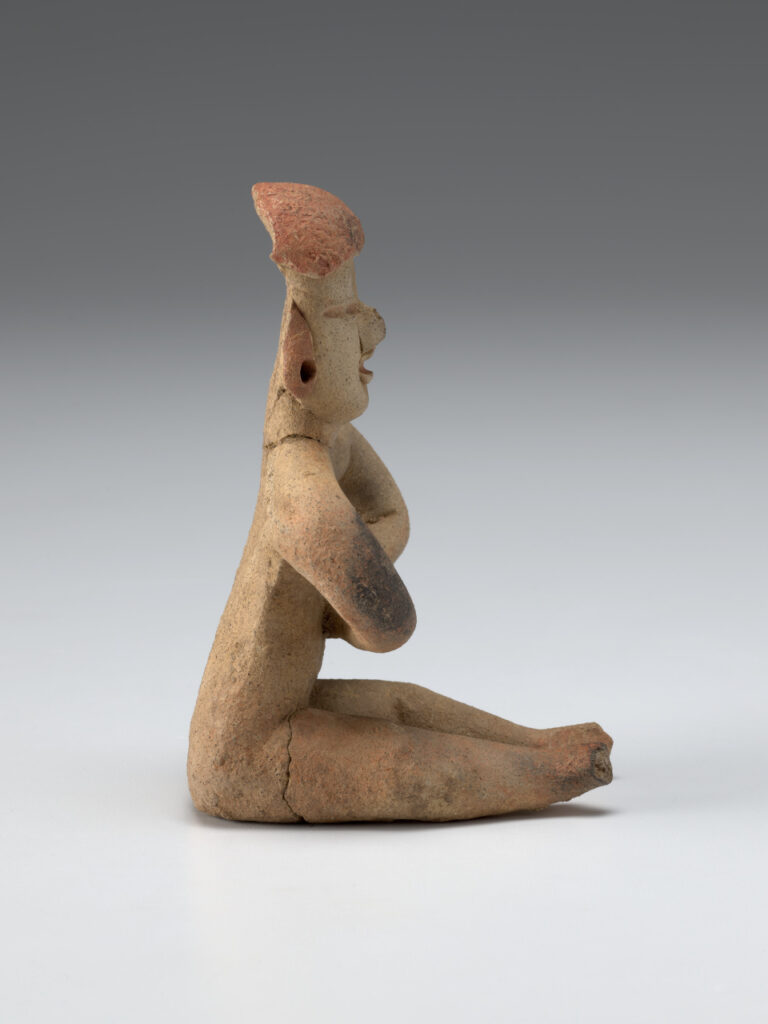Seated Figure (work of art)
Artwork Info
Key Ideas
- This sculpture was made from terracotta in the Olmec style.
- The Olmecs lived on the Gulf of Mexico from about 1200 until 400 BCE. They were the first major Mesoamerican civilization.
- Body adornment has been part of Indigenous practices for centuries. Masks, face paint, clothing, and jewelry were worn to communicate information about a person’s identity.
- There are traces of red paint on this figure’s hair, eyes, mouth, and ears. The red paint comes from cinnabar. This is a rare natural mineral that produces an intense red pigment.
- Ancient Americans used cinnabar in ceremonies, artwork, and burials. It was used to represent blood, the sunrise, maize (corn), and rebirth.
Learn More
Seated Figure is a small sculpture made from terracotta in the Olmec style. The Olmecs were the first major Mesoamerican civilization. They lived in the tropical lowlands on the Gulf of Mexico from about 1200 until 400 BCE. The name Olmec is a Nahuatl (the Aztec language) word meaning “the rubber people.”
The figure sits with its legs out and its arms held toward its chest, with its hands together. The figure’s hair, eyes, mouth, and ears show traces of red paint. Body adornment has been part of Indigenous practices for generations. By wearing a mask or painting the face, a person could acquire a new personality. Dresses and jewelry (especially pectorals, earpieces, and bracelets) were also worn to communicate information about a person’s identity. The way a person dressed and the styles of body adornments they wore communicated to others where they were from and their place in society.
The color red has complex meanings for Mesoamerican cultures. The hair of this figure is colored with cinnabar, a rare natural mineral that is intensely red. Ancient Americans used cinnabar for special ceremonies, important sculptures and murals, and burials of high-status individuals. The Maya considered cinnabar to contain ch’ulel (soul force). This made it a sacred substance. Cinnabar was used to symbolize blood, the sunrise, maize, and rebirth.
The presence of cinnabar on this small figure emphasizes its importance to the people who made and used it. Cinnabar contains mercury. It is now known that mercury can be poisonous, but ancient cultures did not know this. The use of cinnabar for centuries in ancient American cultures led to heavy mercury pollution in ancient cities like Tikal and Cerén.
Additional Resources
Resources for Teachers
- View a lesson plan about the Olmec.
- Read an essay about Olmec art.
- Watch a video about the Olmec.
Resources for Students
- View another seated Olmec figurine.
- Read a short entry about the Olmec civilization.
- Explore a resource from the NCMA to learn more about cinnabar.
Images
-

Seated Figure
A clay sculpture against a gray-toned backdrop. The sculpture is a tan-colored seated figure. The figure sits with its legs out in front, arms held up toward its chest with hands together. It has slanted eyes with a furrowed brow. The nose protrudes from the face and has a very sharp angular shape. The mouth has full lips. The figure has ears that slightly protrude from either side of the head. The figure’s hair, eyes, mouth, and ears have traces of a faded red paint on them. The body of the figure has black and gray splotches of discoloration on one arm and one foot. The figure is not wearing clothes. It has a navel indentation in its belly.




